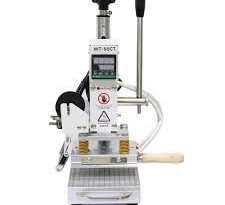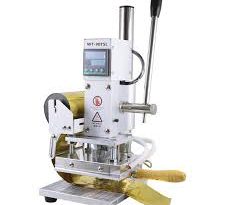The Renaissance of Craftsmanship: Hot Foil Stamping in the Modern Age
In an era where digital media dominates the landscape of communication, the tactile charm of traditional printing techniques has not only endured but experienced a renaissance. Among these, hot foil stamping emerges as a particularly compelling example, merging the allure of craftsmanship with the precision of modern technology. This article delves into the resurgence of hot foil stamping, exploring its process, applications, and the significant role it plays in redefining luxury and craftsmanship in today’s market.
Rediscovering Hot Foil Stamping
Hot foil stamping, a method that dates back centuries, involves the application of metallic or pigmented foil onto a substrate through heat and pressure. This process, perfected over time, allows for the creation of stunning, reflective designs that catch the light and the eye. Unlike conventional printing, hot foil stamping adds a dimensional, tactile quality to printed items, imbuing them with a sense of luxury and exclusivity.
A Spectrum of Applications
The versatility of hot foil stamping extends its appeal across various industries, making it a favorite among designers and brands alike. In the luxury goods sector, it’s used to embellish packaging, lending an air of sophistication to products such as perfumes, wines, and high-end fashion accessories. The publishing world employs it to enhance the covers of books, turning ordinary publications into collector’s items. Even in the realm of personal stationery and wedding invitations, hot foil stamping adds a personal touch that digital printing cannot replicate.
Advantages of Embracing Tradition
- Distinctive Appeal: Hot foil stamping offers a unique aesthetic that digital methods cannot match, setting products apart in a crowded marketplace.
- Sensory Engagement: The method engages more than just the visual sense, inviting touch with its textured finishes, thus creating a more memorable connection between the product and the consumer.
- Brand Prestige: The perceived value of foil-stamped products is higher, associating brands with quality and attention to detail, crucial for luxury and artisanal markets.
- Sustainability: Advances in foil materials, including recyclable and eco-friendly options, address environmental concerns, marrying tradition with modern sustainability efforts.
Meeting Modern Challenges
While the appeal of hot foil stamping is undeniable, its integration into contemporary production involves navigating challenges such as cost, efficiency, and design complexity. Innovations in stamping machines and foil materials have made the process more accessible and versatile, allowing for finer detail and consistency across larger production runs. As the technique evolves, so does its capacity to meet the demands of modern consumers and markets, proving that traditional methods can thrive in the digital age.



